Image of the Day Archives

For older Image of the Day pictures, please visit the Image of the Day archives. Pictured: NGC 2467.
Hello 2013!
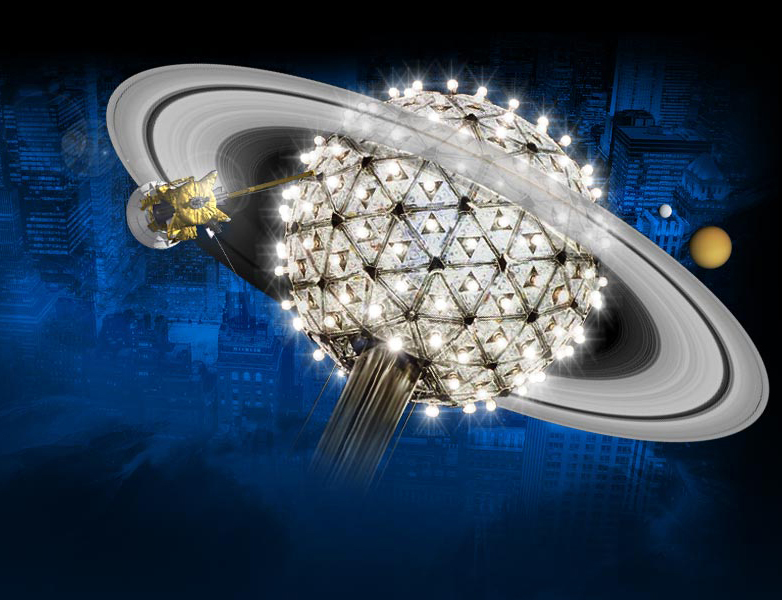
Tuesday, Jan. 1, 2013: New Yorkers may have had a dazzling crystal ball to drop at midnight, but that's nothing compared to Saturn. Happy New Year from NASA's Cassini spacecraft and all of us here at SPACE.com!
Can You See Me?
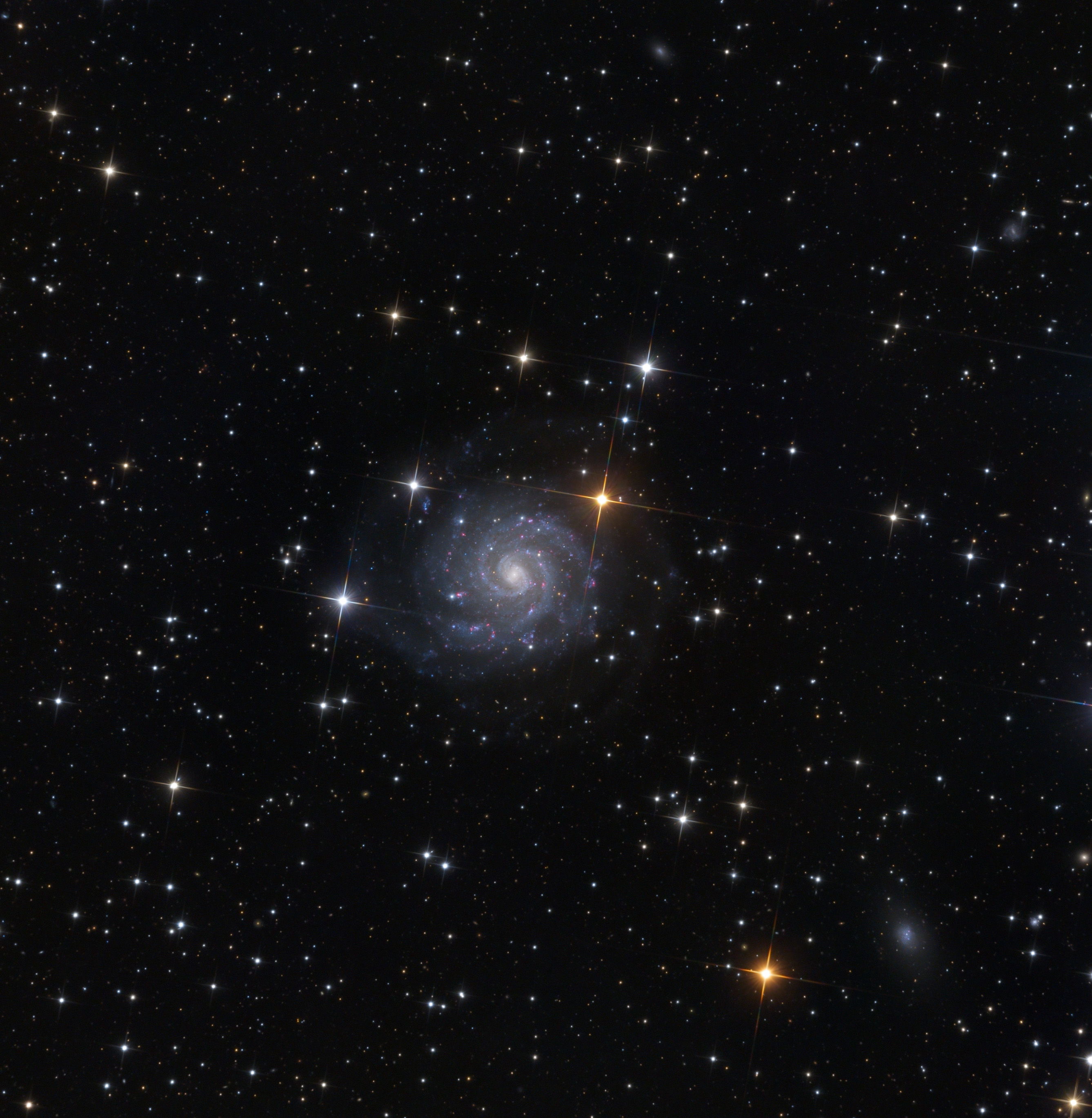
Wednesday, Jan. 2, 2013: Galaxy IC 239 lies 30-40 million light years from Earth, not a great distance by universal standards. It possess a low (surface) brightness that suggests it is not as massive as others of a similar type, such as M101. Bright stars of our own galaxy in the foreground make detecting the structure of this face-on spiral difficult. It vaguely shows bluish spiral arms and many pink nebulae (star-forming regions).
— Tom Chao
Eye of the Sun
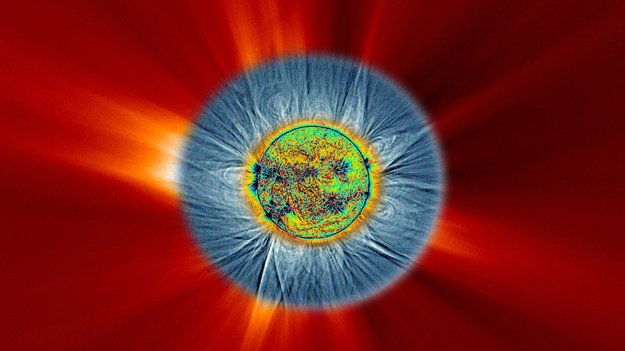
Thursday, Jan. 3, 2013: This unique portrayal of the total solar eclipse of November 13-14, 2012, combines ground-based images (blue ring) with views from ESA’s Proba-2 (false-color central disc) and ESA/NASA’s SOHO satellites (background). Magnetic field lines and streamers glow in the ground-based white-light images, carrying over into the wide-field view from SOHO as the solar wind blows these features out into space. The connection between the ground- and space-based images allows researchers to correlate difficult-to-see regions of the Sun’s atmosphere, visible only during a total solar eclipse.
— Tom Chao
Whirl Away
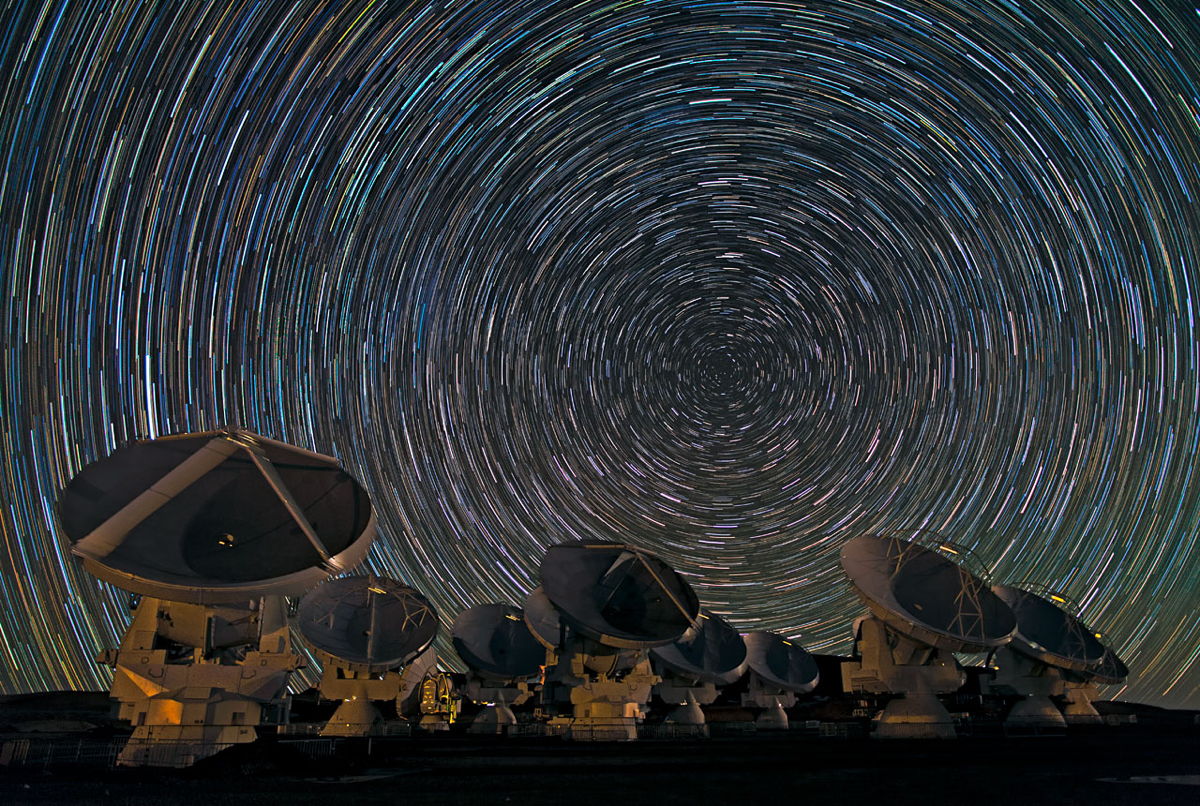
Friday, Jan. 4, 2013: The antennas of the Atacama Large Millimeter/submillimeter Array (ALMA) sit under the stars of the southern sky as they appear to whirl overhead. Babak Tafreshi took the long-exposure photograph on the Chajnantor Plateau in the Chilean Andes. When ALMA construction is completed in 2013, the telescope will possess 54 of these 12-meter diameter antennas, and twelve 7-meter antennas. Image released Dec. 31, 2012.
— Tom Chao
Unseen Companions
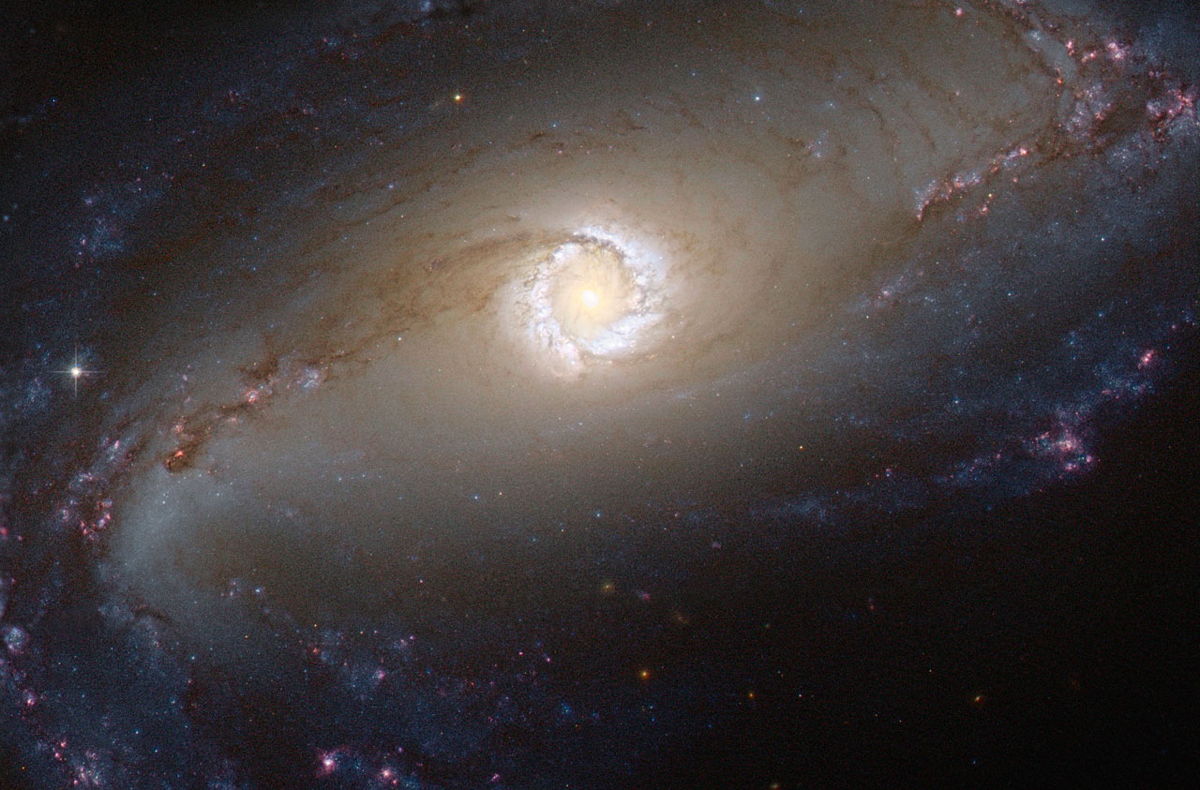
Monday, Jan. 7, 2013: A bright star-forming ring surrounds the heart of the barred spiral galaxy NGC 1097. The face-on galaxy lies 45 million light-years away in the southern constellation of Fornax (The Furnace). At the center of the galaxy, a supermassive black hole 100 million times the mass of our sun sucks in the matter around it. The area immediately around the black hole shines powerfully with radiation coming from the infalling material. The ring around the black hole bursts with new star formation due to an inflow of material toward the central bar of the galaxy. NCG 1097 also possesses two satellite galaxies, NGC 1097A, an elliptical galaxy orbiting 42,000 light-years from the center of NGC 1097, and a small dwarf galaxy named NGC 1097B. Neither can be seen in this image.
— Tom Chao
We Were Made From Dust
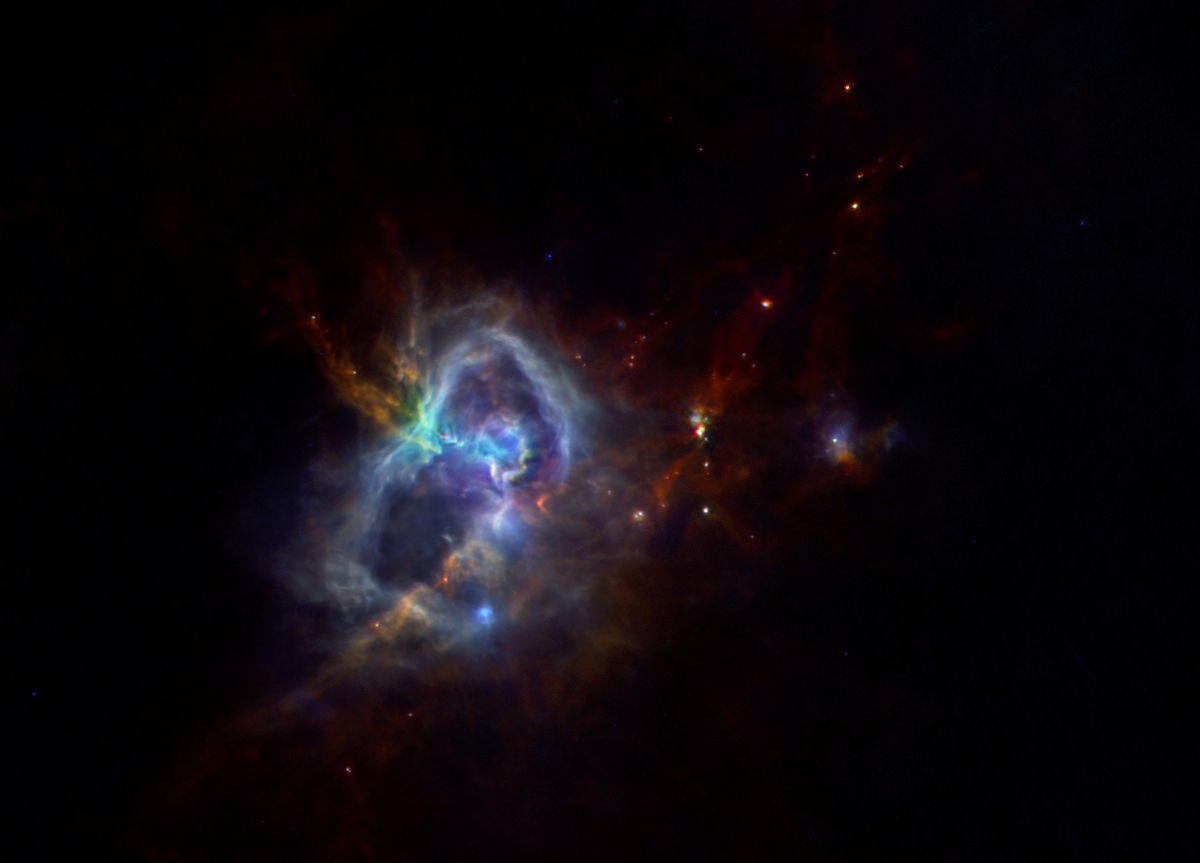
Tuesday, Jan. 8, 2013: The W40 star-forming region, also called Sharpless 2-64, lies about 1000 light-years away in the constellation Aquila, and stretches about 25 light-years across. Six hundred newly forming stars crowd into the filaments of dust forming this stellar nursery.
— Tom Chao
Get the Space.com Newsletter
Breaking space news, the latest updates on rocket launches, skywatching events and more!
Neighbors
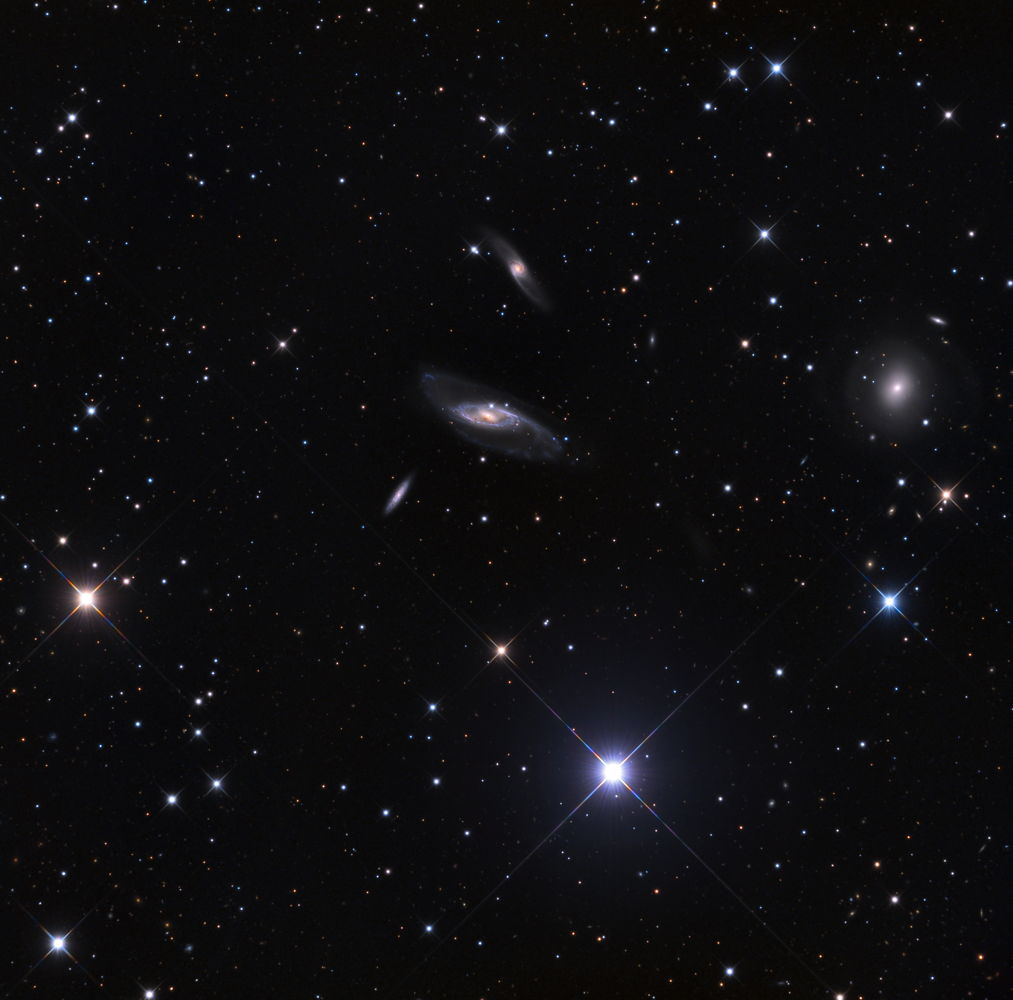
Wednesday, Jan. 9, 2013: Galaxy NGC 536 (center) and neighboring galaxies were captured by Adam Block at the Mount Lemmon SkyCenter in October 2012.
— Tom Chao
Don’t Let the Sun Go Down on Me
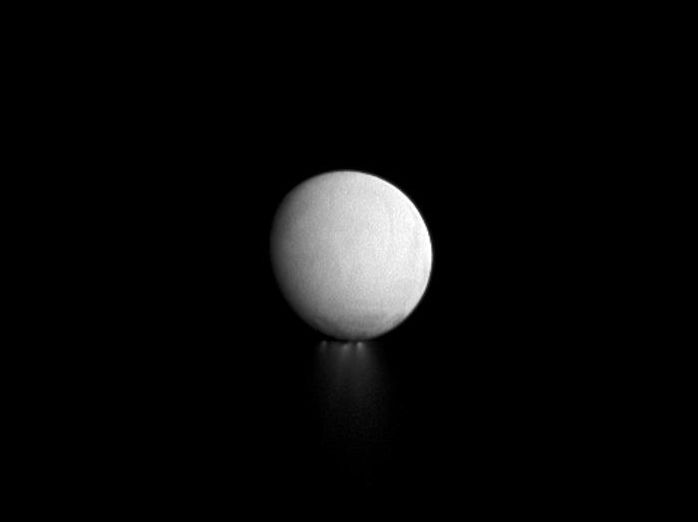
Thursday, Jan. 10, 2013: The jets of dust and gas (bottom) emanating from Saturn’s moon Enceladus will soon disappear from the Cassini spacecraft’s view, as the shadow of the moon creeps up on the jets during the winter night. This view looks toward the Saturn-facing hemisphere of Enceladus. The image was taken on Sept. 24, 2012.
— Tom Chao
Brighten My Northern Sky
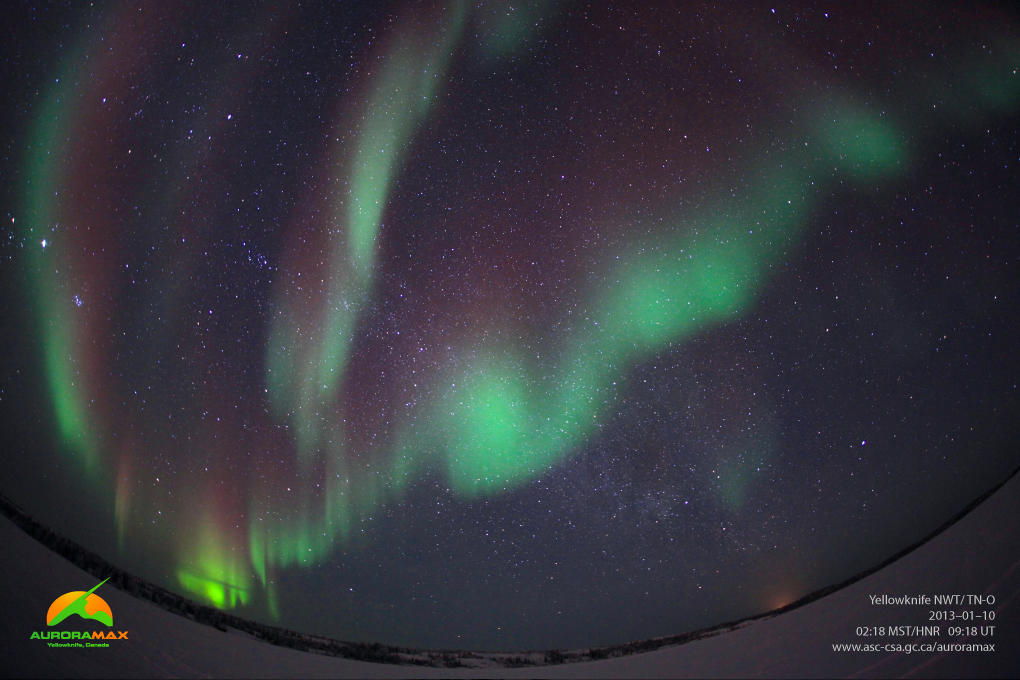
Friday, Jan. 11, 2013: The Canadian Space Agency's AuroraMAX automated camera photographed this aurora over Yellowknife on Jan. 10, 2013.
— Tom Chao
Break, Eject, Eject, Eject
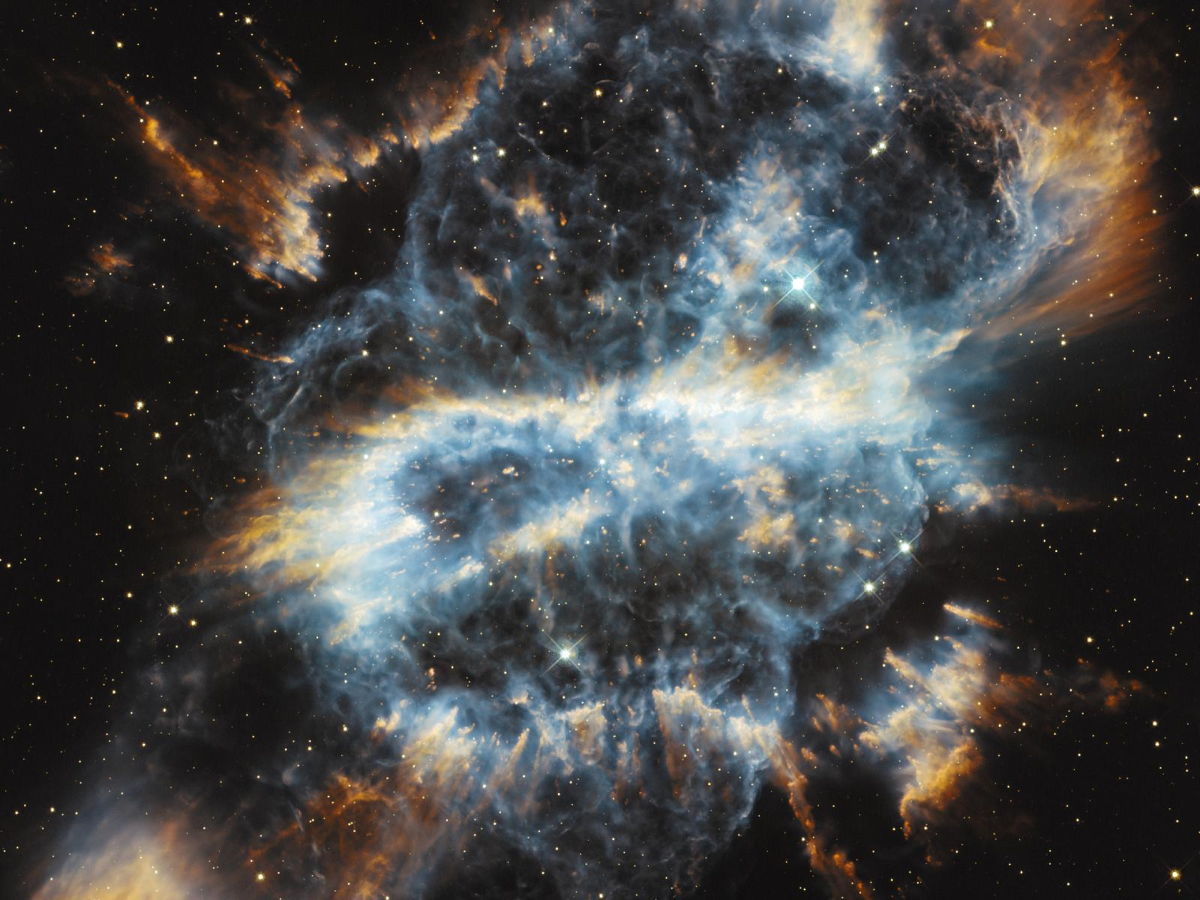
Monday, Jan. 14, 2013: Planetary nebula NGC 5189 consists of a dying star the size of our sun surrounded by material it has ejected from its outer envelope. The radiation of the stellar remnant heats the material, causing it to radiate, forming glowing clouds of gas in complex structures. In this case, NGC 5189 has created two structures expanding from the center in different directions. (The term "planetary nebula" is a misnomer. Early astronomers mistook the celestial objects for planets, but no planets are involved.) Image released Dec. 20, 2012.
— Tom Chao
Join our Space Forums to keep talking space on the latest missions, night sky and more! And if you have a news tip, correction or comment, let us know at: community@space.com.










